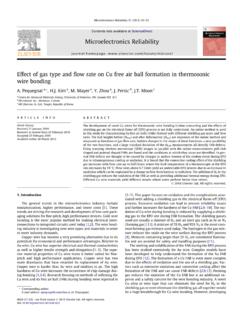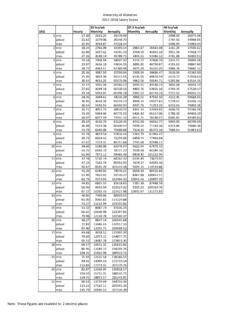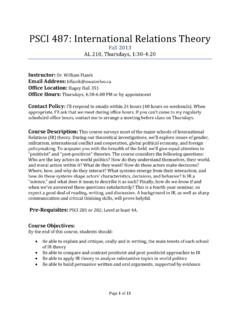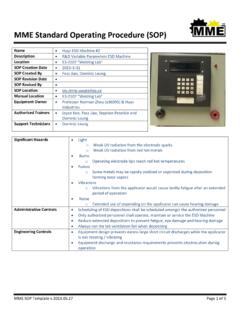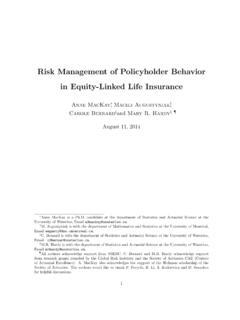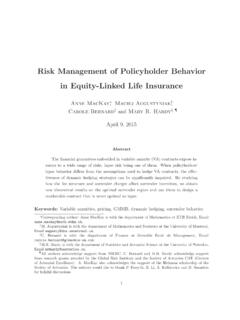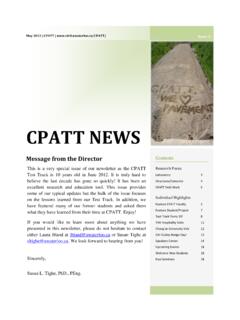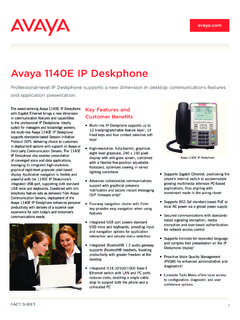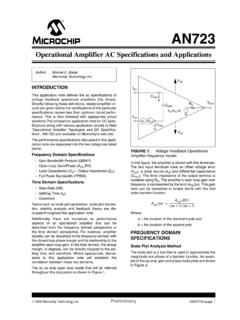Transcription of What is Hysteresis? - Home | University of Waterloo
1 what is hysteresis ? K. A. Morris . hysteresis is a widely occuring phenomenon. It can be application and removal of tensile stress, I found found in a wide variety of natural and constructed systems. that during increment and decrement of the load Generally, a system is said to exhibit hysteresis when a char- equal values of load were associated with widely acteristic looping behaviour of the input-output graph is dis- different values of thermoelectric quality; the differ- played. These loops can be due to a variety of causes. Fur- ence being mainly of this character, that the changes thermore, the input-output graphs of periodic inputs at differ- of thermoelectric quality lagged behind the changes ent frequencies are generally identical.
2 Existing definitions of stress. This lagging is, however, a static phe- of hysteresis are useful in different contexts but fail to fully nomenon, for it is sensibly unaffected by the speed characterize it. In this paper, a number of different situa- at which the load is changed; and again, when any tions exhibiting hysteresis are described and analyzed. The state of load is maintained constant, the thermoelec- applications described are: an electronic comparator, gene tric quality does not change with lapse of regulatory network, backlash, beam in a magnetic field, a Magnetic phenomena present many instances of a class of smart materials and inelastic springs.
3 The common similar action- some of which will be described be- features of these widely varying situations are identified and low. Thus, when a magnetised piece of iron is al- summarized in a final section that includes a new definition ternately subjected to pull and relation of pull suffi- for hysteresis . ciently often to make the magnetic changes cyclic, these lag behind the changes of stress in much the same way as the changes of thermoelectric quality 1 Introduction do. I found it convenient to have a name for this hysteresis occurs in many natural and constructed sys- peculiar action, and accordingly called it hysteresis tems.
4 (from , to lag behind). The relay shown in Figures 1 is a simple example of a system exhibiting hysteretic behaviour. The relay in the This paragraph highlights two key aspects of hysteresis that Figure is centered at s with an offset of r. When the signal are still regarded as characteristic today: lagging and rate- u > s + r, the relay is at +1. As the input decreases, the independence. output R remains at +1 until the lower trigger point s r is Lagging is still generally regarded as a key component reached. At this point the output switches to 1. When the of hysteresis . The online version of the Merriam-Webster signal is increasing, the output remains at 1 until u = s + r.
5 Dictionary defines hysteresis as At this point, the output switches to +1. For inputs in the retardation of an effect when the forces acting upon range s r < u < s+r the output can be +1 or 1, depending a body are changed (as if from viscosity or internal on past history. Thus, the output may lag the input by 2r. friction) ; especially : a lagging in the values of This lag prevents devices such as thermostats from chattering resulting magnetization in a magnetic material (as as the temperature moves just above or below the setpoint. iron) due to a changing magnetizing force. [8]. Hysteretic behaviour is also apparent in many other contexts, such as play in mechanical gears and smart materials [1 6].
6 In the simple relay shown in Figure 1, changes in the output hysteresis also occurs naturally in a number of systems such lag changes in input. However, the output of a linear delay as genetic regulatory systems [2]. All these examples are system such as y(t) = u(t 1) also lags the input. Such sys- discussed in more detail later in this paper. tems would not be described as hysteretic. The first mention of hysteresis appeared in an 1885 pa- The second property mentioned by Ewing, rate inde- per on magnetism [7]. Ewing wrote pendence, means that an input/output plot only depends on In testing the changes of thermoelectric quality the values of the input, but not the speed at which the in- which a stretched wire underwent when succes- put is changed.
7 In a rate-independent system such as those sively loaded and unloaded so as to suffer alternate shown in Figures 1 and 2 the input/output plot with input u(t) = M sin(t) is identical to that with u(t) = M sin(10t). More formally, let a differentiable function : R+ R+. Dept. of Applied Mathematics, University of Waterloo , Waterloo , On- be a time transformation if (t) is increasing and satisfies tario, Canada, (0) = 0 and limt (t) = . For any interval I R+ , let persist for a periodic input as the frequency of the input sig- Map(I) indicate the set of real-valued functions defined on nal approaches zero be regarded as hysteretic.
8 This is useful I. as a test since it excludes systems (such as the linear system in Figure 3) where the looping is a purely rate-dependent Definition 1. [9] An operator : U Map(I) Map(I) phenomenon. However, in magnetic materials, magnetism is rate independent if for all time transformations , and all can approach the single-valued anhysteretic curve as the rate inputs v U, of change of the applied field approaches zero [17]. Since the response of a system to an input is affected by the his- ( v) = (v ). tory of the current input (see again the simple relay in Figure 1), hysteretic systems are often described as having mem- ory.
9 The state x in the familiar dynamical system description x (t) = f (x,t) encodes the memory of a system. Knowledge In [10, pg. 13] hysteresis is defined as rate independence of the current state, and the inputs is sufficient to determine combined with a memory effect, or dependence of previous the output. Consider a simple integrator: values of the input. True rate independence implies that the system is able x (t) = u(t). to transition arbitrarily quickly. For physical systems this y(t) = x(t). is an idealization. For instance, in the magnetic materials discussed in the above quote, changes in magnetization are controlled by a characteristic time constant.
10 Furthermore, The output y is the integral of the input u and the state x stores thermal fluctuations means that magnetization can change the memory of the system, the current state of the integrator. even when the input doesn't change. Thus, rate indepen- This linear system would not be described as hysteretic. dence in magnetic materials is an approximation valid when In this paper a number of common examples of systems thermal effects are low and the input does not change ex- that are said to be hysteretic are examined in detail: an elec- tremely fast. Similarly, it is not possible to vary the temper- tronic trigger, a biological switch, smart materials, mechani- ature of a shape memory alloy arbitrarily quickly, so from a cal play and inelastic springs.
